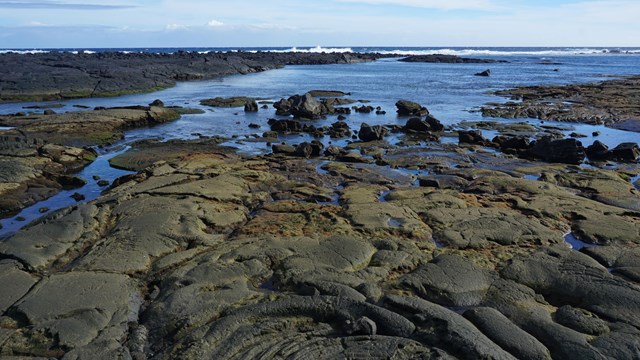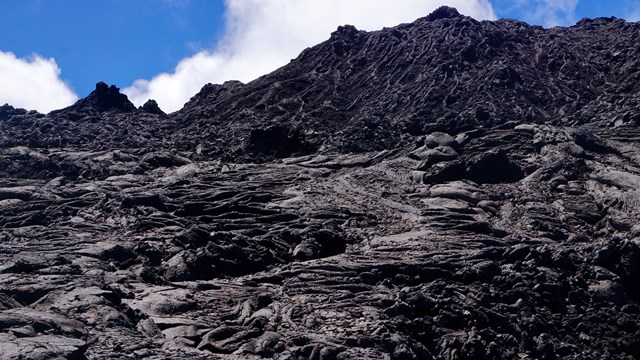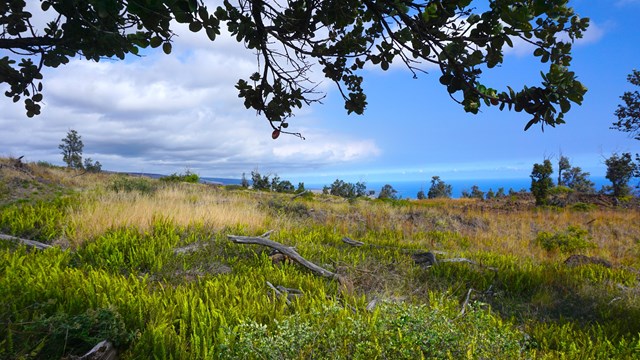Backcountry DestinationsGPS Coordinates Page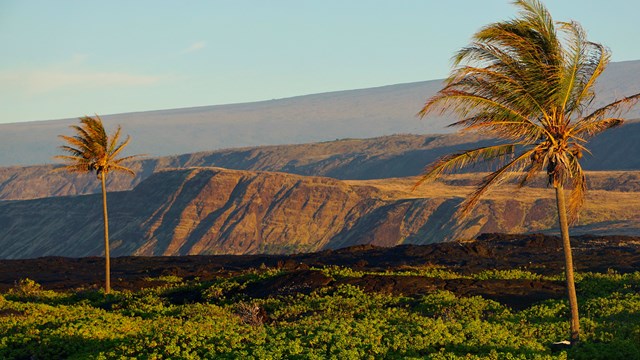
‘Āpua Point
A 6.6 mile hike from the Puna Coast trailhead, along the south-facing shore of the park 
Keauhou
A small, rocky bay accessible via a hike through rough, exposed lava fields and grasses 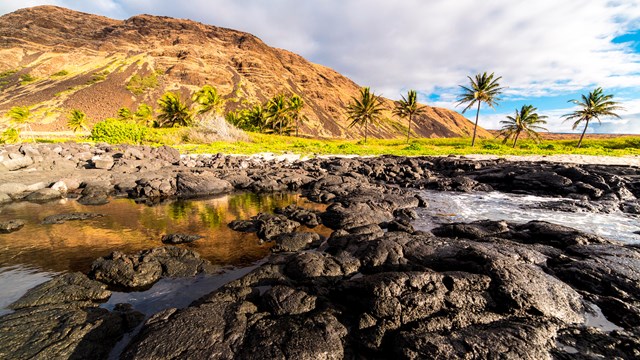
Halapē
Located on the southern seacoast of the park, a popular destination for hearty wilderness hikers 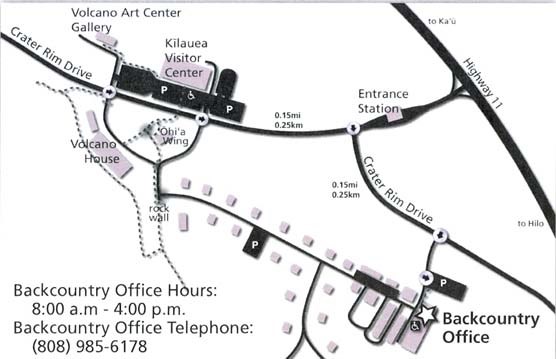
RegisterTo secure a backcountry permit for overnight stays in Hawaiʻi Volcanoes National Park, follow these steps:
Map and directions to the Backcountry Office ( jpg - 784KB ) Backcountry Planner Be PreparedKnow your limits. Be honest and ask yourself, “am I physically fit for the hike I want to do?” You won’t miss out on the spectacular views if you choose an easier trail for your adventure. Overestimating your own physical abilities can have tragic consequences. Learn more about assessing your capabilities and how to hike smart here.
Facilities Ka'aha, Halapē, and Keauhou have three-walled primitive shelters where hikers may enjoy a respite from the sun. Water caught off the roofs of three-walled shelters or backcountry cabins (where applicable) are stored in adjacent catchment tanks (check with rangers when you obtain your permit for current water levels -- water is NOT always available and there are no streams in the area). TREAT water obtained from catchment tanks before drinking. Please use the composting toilet. Do not put trash in the toilet - pack all trash out. Leave No Trace Hikers are required to pack out everything they pack in. Do not bury or discard trash in pit toilets. You must pack it out and practice "Leave No Trace" camping. Emergency Procedures Before you go, leave a trip plan with another person. Make sure they understand that should you be lost or injured on the trail, they are your only link to help and should report you overdue if you fail to contact them by a predesignated time. If lost, stay where you are. Use bright colors and reflective materials to attract attention. To report a lost or overdue hiker, call Hawaii County 911 or Park Dispatch at (808) 985-6170. Check Out of the Backcountry At the completion of your hike, report out by stopping at the Backcountry Office or call (808) 985-6178. Permits are issued because of the dynamic nature of this volcano. In the event of an eruption, it is important for rangers to know who may be in danger. Give us your feedback Let us know about trail, cabin, or campsite conditions. Did you notice anything damaged or dangerous conditions that rangers should be aware of? File a Trip Report HazardsWeatherIsland weather is unpredictable. Visitors should be prepared for rain and wear layers of clothing to ensure their comfort while exploring the park. At the 4,000' summit of Kīlauea, temperatures may be 12 to 15 degrees cooler than at sealevel. Coastal areas are often hot, dry, and windy with the possibility of passing showers. Hiking on Mauna Loa (13,677') requires careful planning and preparation. Check the high-elevation weather forecast before making this hike. Intense sunlight, wind, and high temperatures can lead to dehydration, heat exhaustion or stroke. Pace yourself, drink fluids, eat snacks, and avoid hiking during the hottest times of day. Wear sun protection - sunglasses, sunscreen, and a hat. Plan ahead - hydrate the day before your trek and drink fluids along the trail. Carry and drink a minimum of 4 quarts of water per person per day. During the day, temperatures can soar into the high 90s or higher. On many trails there are NO trees to provide relief from the sun. Trail Conditions Trails may be steep and rocky. Watch your footing along the hot and windy trails. Maximum elevation change between trailhead and campsite is 3,000 feet (1000m). Stay on the trail! Do not cut across switchbacks as this accelerates erosion. Trails are marked by stone cairns (ahu) that may be difficult to see in the rain and mist, and impossible to find in the dark. Trails are rocky and uneven, and may be overgrown with thick vegetation. Seismic and Volcanic Hazards An earthquake can cause a locally-generated tsunami (seismic sea wave) at the coast. If you feel a strong earthquake, move to high ground immediately. Earthquakes can also produce large rock falls -- avoid potential rock fall areas.. Stay on the trail -- earth cracks, thin crusts, and lava tubes are numerous Fire Hazards Trails in the park traverse areas which contain very flammable grasses and brush. Open fires, fireworks, and smoking are prohibited. Unexploded Ordnance In the Ka'ū Desert and coastal areas west of Ka'aha, there may be unexploded WWII ammunition. If you should see any, DO NOT TOUCH IT. Report the location to rangers. Pesky and Dangerous Animals Centipedes, scorpions, and black widow spiders are common in stone walls and rocky areas. Sharks are sometimes seen in coastal waters. Beware of sea urchins (wana), tubeworm casts, and sharp rocks when wading or swimming. Mongooses, mice, and feral cats thrive on unattended food supplies. Store food securely and keep a clean camp. To keep out insects, tents with fully zipable screens are recommended. Protect Plants, Animals, and Archeological SitesIt's a Good Idea and It's the Law
|
Last updated: December 19, 2023

